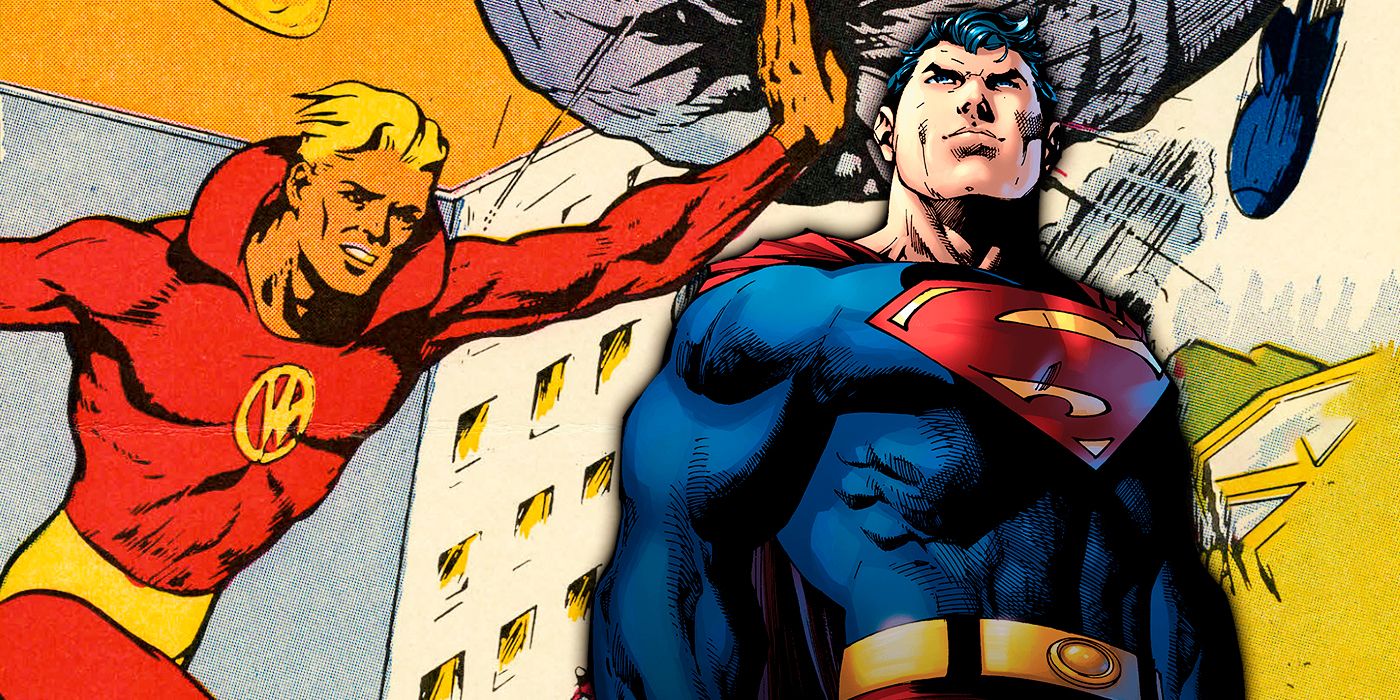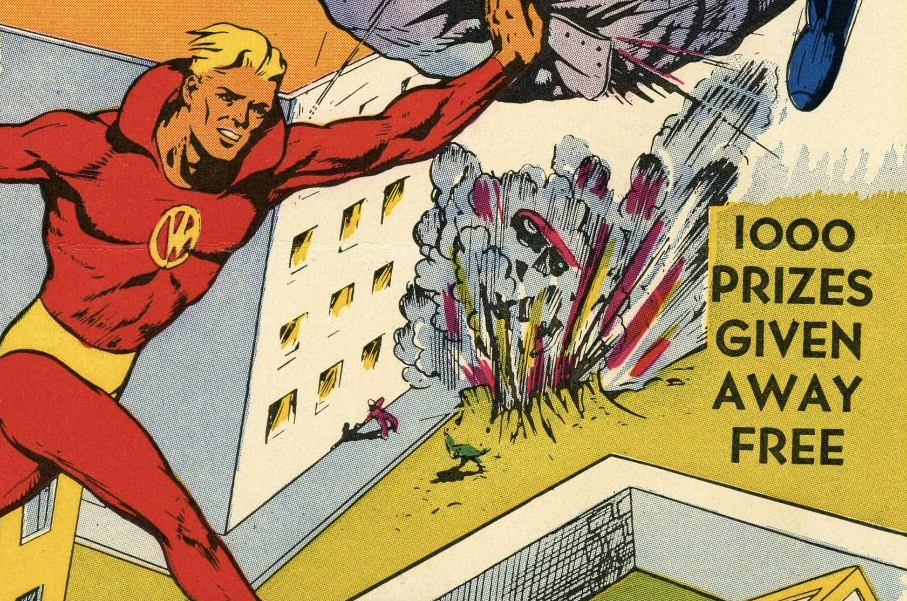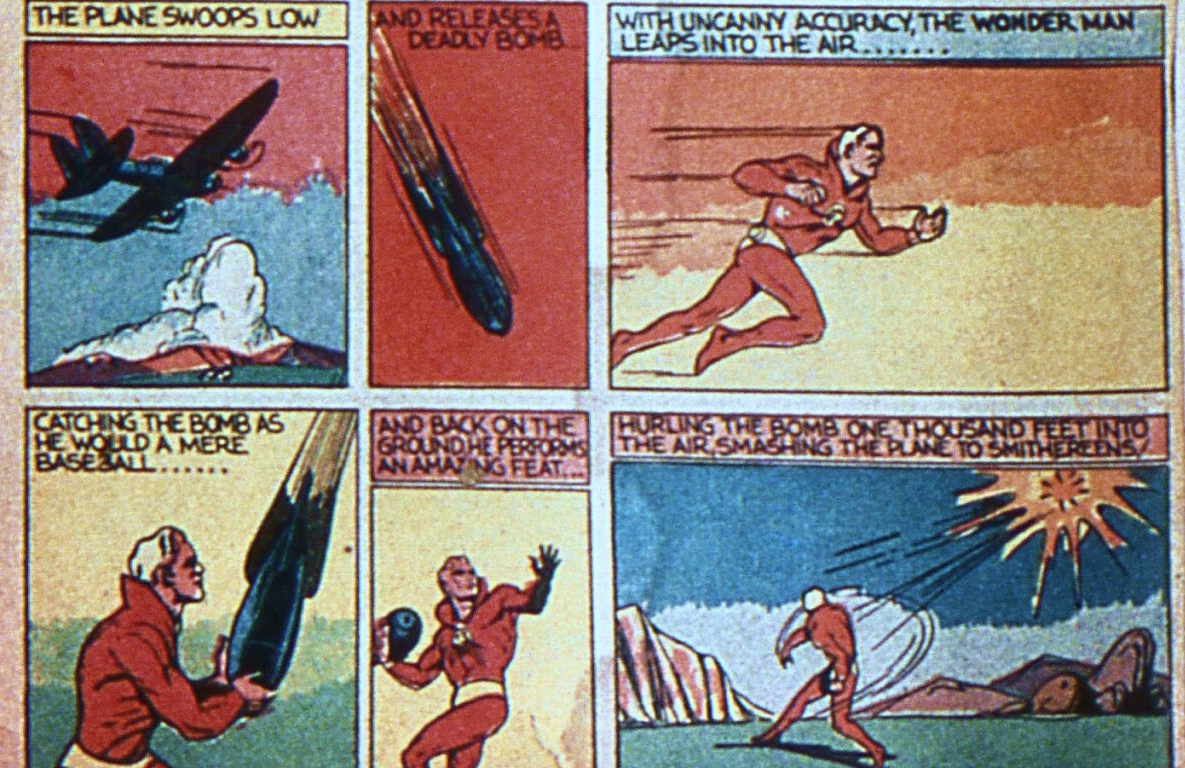In 1939, comic book legend Will Eisner created a brand-new superhero for Fox Comics called 'Wonder Man.' This hero was a former radio engineer imbued with the powers of a magical ring from Tibet that granted him super-strength and the ability to fly. Despite the seeming innocence of this Golden Age superhero, Wonder Man would be the subject of a lawsuit from DC Comics, who claimed that the hero was a copy of their iconic Man of Steel, Superman.
Wonder Man's first and only appearance was in 1939's Wonder Comics #1 (by Will Eisner, Bob Kane and Bob Powell) which was meant to be Fox's answer to DC's Action Comics. Although the origin of Wonder Man was quite different from that of the Last Son of Krypton, the comic issue did sport numerous similarities to comics published by DC, with the cover possessing a remarkable likeness to several issues of Action Comics
.
Wonder Man's comic book debut did not explain how he obtained the magical ring that gave him his powers, as this was meant to be explored in subsequent issues. However, the comic does detail Wonder Man's first public appearance as a superhero. When Brenda Hastings decided to join the Red Cross in the war-torn nation of Tatonia, her father tasked Fred Carson (Wonder Man's alter ego) to chaperone his daughter and ensure her safety. While initially disinterested in playing "nursemaid", his tone changes when he becomes aware of the atrocities occurring in the nation, and decided that his new powers could best be served in aiding the disenfranchised citizens.
Fred Carson and Brenda Hastings arrived at the Red Cross camp in Tatonia where they almost immediately come under threat when an insurgent bomber plane advances towards the campgrounds. Fred and Brenda aided in evacuating the camp until there was only one plane left capable of evacuating one more person, with Fred giving the last spot on the plane up so that Brenda could escape. With all other volunteers evacuated, Fred Carson transforms into Wonder Man and engages the insurgent plane, managing to catch its payload midair and tossing it safely out of the way.
Although there were noticeable differences between Will Eisner's new superhero and Superman, the similarities in powers, aesthetics and demeanor were enough for DC Comics to launch a copyright infringement lawsuit against Fox Comics on March 15th, 1939. This lawsuit was brought before the Second Circuit in a 1940 court case dubbed Detective Comics, Inc vs. Bruns Publication, Inc where Fox Comics had to defend the Wonder Man character as not being an illegal replication of Superman. Fox Comics cited common western mythology and literature as having long-established archetypal protagonists that act as inspiration for Superman, such as the biblical character Samson and Hercules from Ancient Greek myth.
While the court did concede that many attributes of Superman are shared with famed characters from historical epics, the Second Circuit concluded that Wonder Man's costume and superhuman feats were clearly an imitation of Superman. As such DC Comics won the court case and Fox Comics was forced to discontinue using the superhero in any forms of media. The Wonder Comics superhero comic book line would continue however, with new superheroes such as Yarko the Great, Phantom Lady, The Flame, and Blue Beetle taking Wonder Man's place within the pantheon of Fox's superhero characters.
Wonder Man's discontinuation was unfortunate as Will Eisner did an exceptional job of creating a complex superhero story. Additionally, Wonder Man's desire to venture beyond the United States to impoverished countries was unique and refreshing for a superhero during the 1930s. However, Wonder Man's unique aspects were not enough to save the superhero, and he would be but the first of many superhero copyright cases to occur within the comic book medium.



